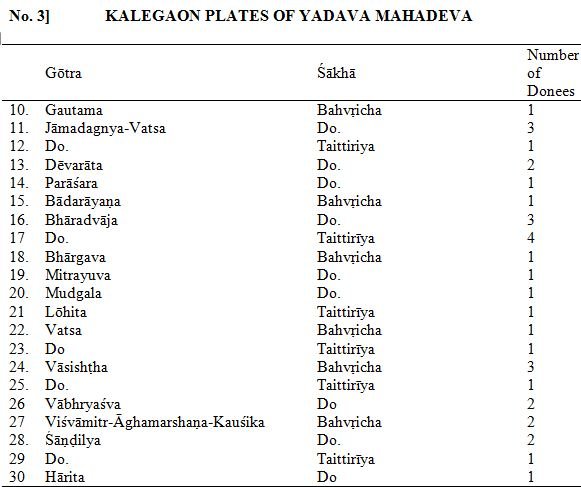|
EPIGRAPHIA INDICA

The usual convention was that the grants of older kings should be continued by later rulers
even though they may have belonged to a different royal house. It is therefore interesting to note
that the village granted to fifty-two Brāhamaṇas in 1261 A.D. was again given as an Inām to the
Vyāsas by a Pēshwā. It seems that, for some reason or other, Kālēgaon was deserted by the decendants of the donees of this grant.
Among the privileges enjoyed by the donees of the grant, the expression ashṭa-bhōga normally
stands for following eight kinds of enjoyment fixed by usage (grāma-maryādā) : nidhi (treasure
trove) ; nikshēpa (also called upanidhi, deposits on the soil) ; jala (water reservoirs) ; pāshāṇa
(stones, mines and quarries) ; akshiṇī (actual privileges) ; āgāmī (future profits) ; siddha or
siddhāya (what is already brought under cultivation) ; sādhya (waste land that may in future be
|